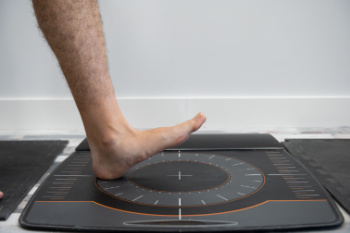Items filtered by date: November 2025
Ending Pain From Ingrown Toenails

An ingrown toenail occurs when the edge of a toenail grows into the surrounding skin, leading to pain, redness, and sometimes infection. This common problem can make even the simplest tasks uncomfortable, especially when wearing shoes. A podiatrist can relieve the pressure by gently lifting or trimming the affected nail, and treating any infection that may be present. For more advanced cases, a minor in-office procedure can prevent the nail from growing inward again. Wearing shoes with adequate toe room and trimming nails straight across can help reduce future problems. Proper care not only eases discomfort, but also restores confidence in walking and daily movement. If you notice swelling, pain, or drainage around your toenail, it is suggested you promptly schedule an appointment with a podiatrist for a proper diagnosis and appropriate treatment.
Ingrown toenails can become painful if they are not treated properly. For more information about ingrown toenails, contact one of our podiatrists of Chicago Foot Specialists. Our practitioners can provide the care you need to keep you pain-free and on your feet.
Ingrown Toenails
Ingrown toenails occur when a toenail grows sideways into the bed of the nail, causing pain, swelling, and possibly infection.
Causes
- Bacterial infections
- Improper nail cutting such as cutting it too short or not straight across
- Trauma to the toe, such as stubbing, which causes the nail to grow back irregularly
- Ill-fitting shoes that bunch the toes too close together
- Genetic predisposition
Prevention
Because ingrown toenails are not something found outside of shoe-wearing cultures, going barefoot as often as possible will decrease the likeliness of developing ingrown toenails. Wearing proper fitting shoes and using proper cutting techniques will also help decrease your risk of developing ingrown toenails.
Treatment
Ingrown toenails are a very treatable foot condition. In minor cases, soaking the affected area in salt or antibacterial soaps will not only help with the ingrown nail itself, but also help prevent any infections from occurring. In more severe cases, surgery is an option. In either case, speaking to your podiatrist about this condition will help you get a better understanding of specific treatment options that are right for you.
If you have any questions, please feel free to contact our office located in Chicago, IL . We offer the newest diagnostic and treatment technologies for all your foot care needs.
How the Foot and Ankle Work in Harmony

The foot and ankle contain a complex network of bones, joints, muscles, and ligaments that work together to support movement and balance. Each step begins with the heel striking the ground, followed by a smooth transition through the midfoot and a push-off from the toes. The ankle acts as a hinge, allowing the foot to move up and down, while the arch absorbs shock and adapts to different surfaces. Proper alignment and flexibility are key to efficient motion and injury prevention. When any part of this system is out of balance, pain or instability may develop, affecting the entire body’s mechanics. If you notice discomfort, changes in your gait, or recurring ankle or foot pain, it is suggested that you consult a podiatrist to ensure your biomechanics are functioning correctly and to maintain healthy, pain-free movement.
If you have any concerns about your feet, contact one of our podiatrists from Chicago Foot Specialists. Our practitioners can provide the care you need to keep you pain-free and on your feet.
Biomechanics in Podiatry
Podiatric biomechanics is a particular sector of specialty podiatry with licensed practitioners who are trained to diagnose and treat conditions affecting the foot, ankle and lower leg. Biomechanics deals with the forces that act against the body, causing an interference with the biological structures. It focuses on the movement of the ankle, the foot and the forces that interact with them.
A History of Biomechanics
- Biomechanics dates back to the BC era in Egypt where evidence of professional foot care has been recorded.
- In 1974, biomechanics gained a higher profile from the studies of Merton Root, who claimed that by changing or controlling the forces between the ankle and the foot, corrections or conditions could be implemented to gain strength and coordination in the area.
Modern technological improvements are based on past theories and therapeutic processes that provide a better understanding of podiatric concepts for biomechanics. Computers can provide accurate information about the forces and patterns of the feet and lower legs.
Understanding biomechanics of the feet can help improve and eliminate pain, stopping further stress to the foot.
If you have any questions please feel free to contact our office located in Chicago, IL . We offer the newest diagnostic and treatment technologies for all your foot and ankle needs.

